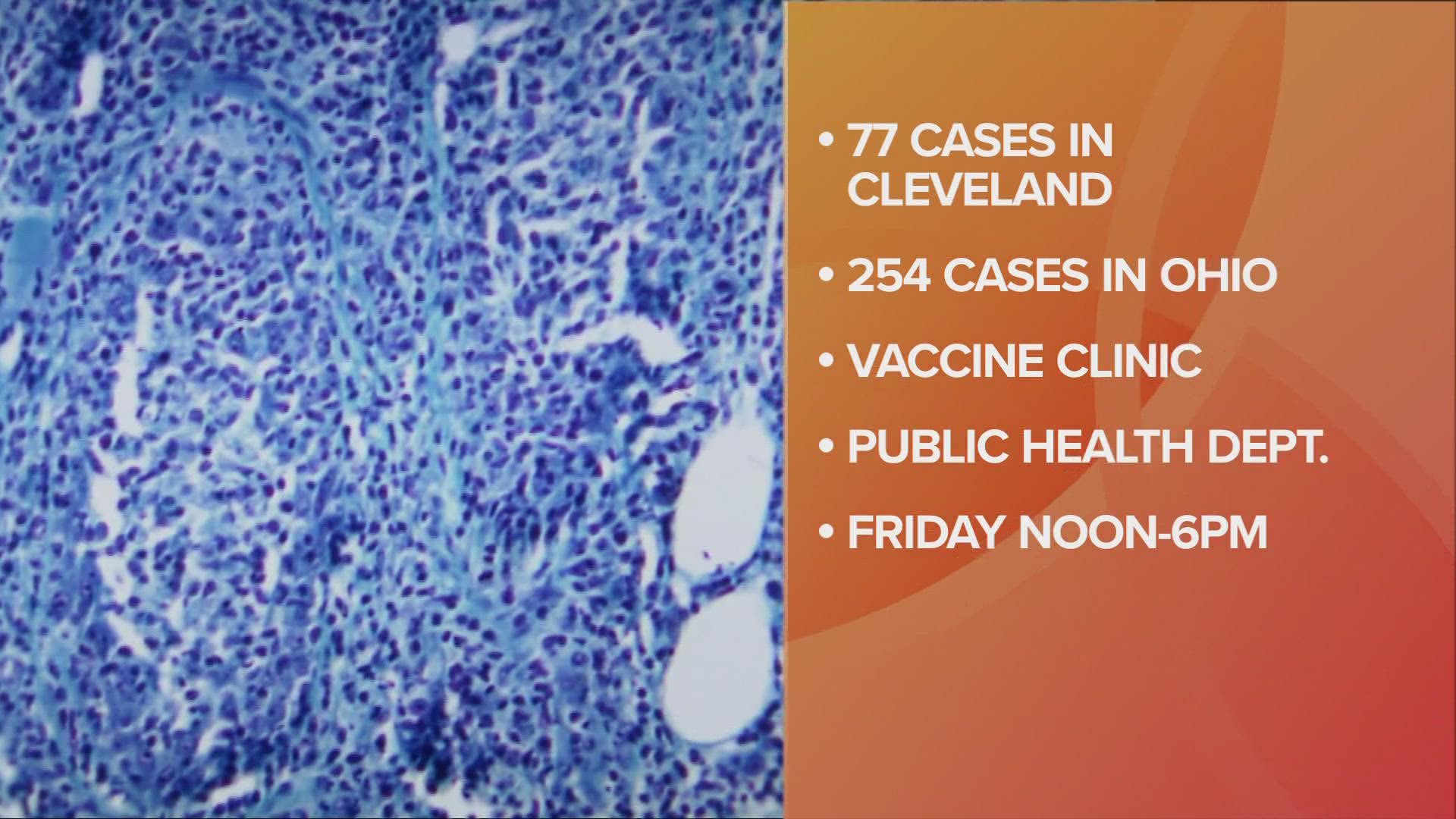CLEVELAND — Editor's Note: The above video with previous reporting on the monkeypox outbreak in Cleveland aired on September 20, 2022
According to the Cleveland Department of Public Health, monkeypox cases are continuing to rise in Northeast Ohio.
On Wednesday, CDPH reported that the city of Cleveland has had 85 cases of monkeypox to date, more than any other city in Ohio. Cleveland has had 85 of the 136 cases in Cuyahoga County, which has more cases than any other county in the state.
By comparison, Franklin County (Columbus) has reported 42 cases of monkeypox, while Hamilton County (Cincinnati) has 13. Overall, there are now 263 cases of monkeypox in Ohio to date. More data from the CDPH reveals that in the last 10 days, cases in Cleveland increased 13%, and there was a 4% increase across the state.
Due to limited supply of the JYNNEOSTM vaccine nationally, eligibility is restricted to those at highest risk of a recent exposure based on national and local cases. This includes men who are gay, bisexual, or have sex with men; those who are transgender, gender non‐conforming, or gender non‐binary; or those who have had multiple or anonymous sex partners in the last 14 days, in addition persons who have been exposed to persons with confirmed MPX are considered high risk.
The Cleveland Department of Public Health will host a vaccination clinic this Friday, Sept. 30, from noon to 6 p.m. at 1313 E. 26th Street. The JYNNEOS is a two-dose vaccine which requires four weeks between doses The CDPH vaccination clinic will offer both first and second doses.
Dates for October monkeypox vaccination clinics are expected to be announced soon. Vaccines are free and confidential. No pre‐registration or appointment is required. Click here for more information on CDPH's clinics. You can also click here to find a vaccination clinic near you.
While current monkeypox cases are disproportionately affecting gay, bisexual, and other men who have sex with men, anyone can get and spread monkeypox, regardless of sexual orientation. Monkeypox is spread via skin‐to‐skin contact with an infected person, contact with contaminated clothes or linen, or contact with respiratory secretions from an infected individual. Scientists are also currently investigating how often it is spread via respiratory secretions, according to CDPH.
Previous Reporting:

